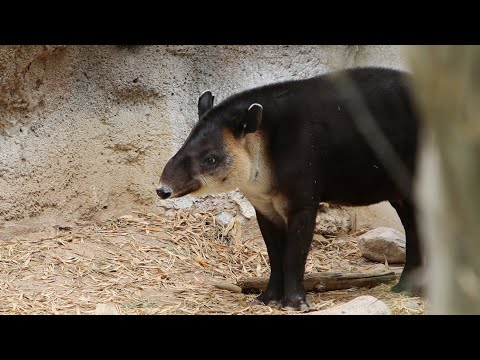– Understanding the biology and natural behavior of Baird’s tapirs
– The critical role of hoofin’ it with the Baird’s tapirs in zoo management and wildlife conservation
– Challenges in conserving Baird’s tapirs and the strategies employed to overcome them
– The impact of human activities on Baird’s tapirs and the environment
– Successful conservation stories related to Baird’s tapirs
Understanding Baird’s tapirs’ biology and natural behavior is the foundation for appreciating their significance in zoo management and wildlife conservation efforts. Baird’s tapirs, also known as Central American tapirs, are the largest of the four species of tapir found in the Americas. Their distinctive physical features include a short, prehensile snout that functions like an elephant’s trunk, allowing them to easily grasp leaves. These nocturnal herbivores thrive in various habitats, from lowland rainforests to montane forests, which underline their adaptability and emphasize the importance of diverse and protected habitats for survival.
The role of hoofin’ it with the Baird’s tapirs extends beyond mere entertainment or educational programming in zoos. This interactive experience is pivotal for zoo management and wildlife conservation, facilitating a deeper connection between humans and this species. Through firsthand observation and participation, visitors understand the species’ behaviors, diet, and living conditions, fostering a sense of responsibility and urgency toward their conservation. By engaging the public in these direct experiences, zoos bolster support for conservation initiatives and highlight the plight of Baird’s tapirs, magnifying the impact of conservation messaging.
However, conserving Baird’s tapirs faces myriad challenges, including habitat loss due to deforestation, agricultural expansion, and constructing roads and settlements. Illegal hunting also poses a significant threat, contributing to their classification as Endangered on the IUCN Red List. Overcoming these obstacles requires a multi-faceted approach, combining habitat preservation, establishing wildlife corridors, and stringent anti-poaching measures. Furthermore, scientific research is vital in informing management and conservation strategies, ensuring they are based on the latest understanding of the species and their needs.
Human activities undoubtedly impact Baird’s tapirs and environments, often leading to conflict. As forests are cleared and natural habitats fragmented, tapirs increasingly encroach on agricultural lands in search of food, leading to negative perceptions among farmers. Addressing these challenges necessitates collaborative efforts that include local communities in conservation planning, promoting coexistence strategies, and highlighting the ecological benefits Baird’s tapirs contribute to, such as seed dispersal, which aids in forest regeneration.
Despite these challenges, successful conservation stories related to Baird’s tapirs have inspired optimism. Efforts such as reforestation, the creation of protected areas, and the facilitation of genetic diversity through wildlife corridors have shown positive results. Educational programs targeting local communities have also effectively altered perceptions and reduced human-tapir conflicts. These successes underscore the importance of integrated conservation strategies that address both the species’ needs and the socio-economic realities of the regions they inhabit.
In sum, hoofin’ it with Baird’s tapirs is a critical component of zoo management and wildlife conservation, offering an immersive experience that educates and engages the public. Understanding Baird’s tapirs’ biological and behavioral characteristics underlies these efforts, informing strategies to address the pressing challenges of habitat loss and human conflict. Despite the obstacles, dedicated conservation work, combining scientific research with community involvement, has achieved meaningful progress, forging a hopeful path for the future of Baird’s tapirs and their continued coexistence with humans.
*****
Source Description
Baird’s tapirs are known for their elongated snout that forms a flexible, prehensile proboscis. Learn more about these amazing herbivores with Animal Care Specialist Juls.


